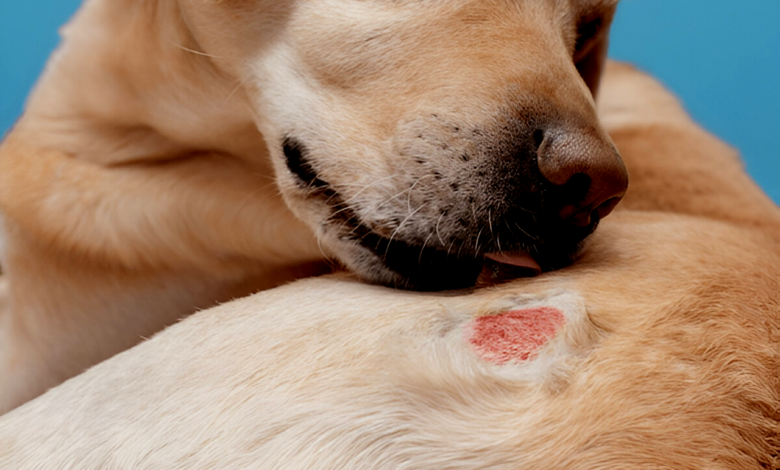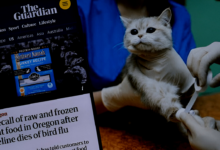
Pet Disease Hotspots in Nevada What’s Spreading & How to Stay Safe
Pet disease hotspots in Nevada pose serious risks Learn about spreading illnesses like Parvo & Valley Fever plus essential prevention tips for pet safety.
Nevada’s vast deserts, bustling cities, and recreational areas create unique pet disease hotspots where illnesses can spread rapidly among dogs and cats. From highly contagious viruses like Parvo to tick-borne infections and fungal diseases, pet owners must stay vigilant to protect their furry companions. With increasing pet populations in urban centers like Las Vegas and Reno, as well as exposure risks in rural areas, understanding these threats is the first step toward prevention. This guide explores the most common and dangerous pet diseases in Nevada, their symptoms, and how they spread empowering you to take action before your pet becomes infected.
Whether you frequent dog parks, hiking trails, or boarding facilities, your pet may encounter unseen health risks. Factors like climate, wildlife interactions, and even human activity contribute to disease transmission across the state. By recognizing pet disease hotspots in Nevada and implementing proactive safety measures, you can significantly reduce your pet’s risk of illness. Read on to discover which diseases are on the rise, how veterinarians recommend preventing them, and what to do if your pet shows warning signs. A well-informed owner is a pet’s best defense against these growing health threats. Avoid letting pets drink from outdoor water sources. Control rodent populations around homes.
Pet Disease Hotspots in Nevada
Canine Parvovirus (Parvo)
Transmission Highly contagious viral infection spread through direct contact with infected dogs or contaminated surfaces. Virus can survive in soil and on surfaces for months. Common in shelters, dog parks, and kennels. At-Risk Pets Unvaccinated dogs and puppies (6 weeks to 6 months most vulnerable). Certain breeds (Rottweilers, Dobermans, Pit Bulls, German Shepherds) have higher susceptibility. Symptoms are Severe, bloody diarrhea. Violent vomiting. Lethargy and loss of appetite. Rapid dehydration. Fever or hypothermia. Treatment & Prevention Vaccination is critical (DHPP vaccine series for puppies + boosters). Immediate veterinary care required (IV fluids, anti-nausea meds, antibiotics). Quarantine infected dogs and disinfect with bleach solutions. Avoid public spaces until vaccination series complete.
Leptospirosis
Transmission Bacterial disease spread through urine-contaminated water, soil, or food. Common carriers: rodents, raccoons, coyotes, and livestock. Thrives in Nevada’s rare standing water after rains. At-Risk Pets Dogs who drink from puddles, ponds, or streams. Hunting dogs or pets with wildlife exposure. Unvaccinated animals. Symptoms High fever (103-105°F). Muscle tenderness and stiffness. Increased thirst/urination (kidney involvement). Jaundice (yellow gums/eyes). Blood in urine. Treatment & Prevention Leptospirosis vaccine (often separate from core vaccines). Antibiotics (doxycycline commonly prescribed). Avoid letting pets drink from outdoor water sources. Control rodent populations around homes.
Valley Fever
Endemic Areas Southern Nevada (especially Clark County). Dusty regions with construction activity. How Infection Occurs Dogs inhale fungal spores from disturbed soil. Spores transform into tissue-invading organisms. Disease Progression Primary Infection: Cough, fever, lethargy. Disseminated Disease Bone lesions, seizures, skin ulcers. Diagnosis & Treatment Fungal blood tests (antibody titers). X-rays to check lung involvement. Long-term antifungal medications (6-12 months). Limit outdoor activity during dust storms.
Tick-Borne Diseases
High-Risk Areas in Nevada Lake Tahoe basin, Red Rock Canyon, Mount Charleston, Rural areas with deer population. Common Tick Species American Dog Tick. Rocky Mountain Wood Tick, Brown Dog Tick (indoor infestations possible). Symptoms Vary by Disease Lyme Disease are Lameness, swollen joints, fever. Rocky Mountain Spotted Fever are Neurological signs, skin lesions. Ehrlichiosis: Bleeding disorders, anemia. Prevention Strategies Monthly tick preventatives (NexGard, Bravecto, Seresto collars). Tick checks after outdoor activities. Yard treatments in endemic areas. Prompt tick removal with tweezers.
Kennel Cough
Transmission Airborne bacteria/viruses (Bordetella, Parainfluenza). Spreads rapidly in boarding facilities, dog shows, daycares. Symptoms Harsh, honking cough. Gagging or retching. Nasal discharge. Mild fever in severe cases. Treatment Approaches Bordetella vaccine (oral, injectable, or intranasal options). Antibiotics if bacterial infection present. Cough suppressants for comfort. Isolate sick pets for 10-14 days.
Emerging Concerns
Rabies Still present in Nevada wildlife (bats, skunks, foxes). Canine Influenza Increasing cases in urban areas. Giardia Waterborne parasite causing diarrhea. Proactive Protection Plan Core Vaccines Rabies, DHPP, Bordetella. Lifestyle Vaccines Leptospirosis, Canine Influenza. Parasite Control Monthly flea/tick/heartworm prevention. Environmental Awareness Avoid high-risk areas during outbreaks. Early Intervention Seek vet care at first signs of illness.
How Pet Diseases Spread in Nevada
Understanding how diseases spread is key to prevention. Direct contact between pets such as sniffing, playing, or fighting can transmit viruses like Parvo and Kennel Cough. Dog parks, grooming salons, and shelters are common hotspots. Contaminated environments also play a major role. Parvo can linger in soil for months, while Leptospirosis thrives in water. Pets walking through infected areas may carry pathogens home. Wildlife interactions introduce additional risks. Coyotes, rodents, and birds can carry parasites and bacteria. Pets hunting or scavenging may contract diseases like rabies or Leptospirosis. Finally, human-mediated spread occurs when owners unknowingly bring pathogens home on shoes or clothing. Regular disinfection and removing outdoor shoes can minimize this risk.
Protecting Your Pet
The best defense against pet disease hotspots in Nevada is proactive care. Vaccinations are the first line of defense ensure your pet is up-to-date on core vaccines and discuss optional ones (like Leptospirosis) with your vet. Parasite prevention is equally important. Monthly flea and tick treatments, along with heartworm medication, can stop infestations before they start. Hygiene practices, such as washing food bowls, grooming tools, and bedding regularly, reduce bacterial buildup. If visiting dog parks, choose less crowded times and avoid areas with visible waste. Regular vet check-ups help catch illnesses early. Annual blood tests and fecal exams can detect hidden infections. Lastly, monitor outdoor activities. Avoid letting pets drink from puddles or interact with wildlife. In tick-prone areas, use vet-approved repellents.
Read More: Top 5 Deadly Diseases in Pets & How to Protect Them
Conclusion
As we’ve explored, pet disease hotspots in Nevada present real risks to our furry companions, but informed pet owners can make all the difference. By recognizing the most common threats – from Parvovirus in urban dog parks to Valley Fever in dusty southern regions – you’re already taking the first crucial step toward prevention. Remember that vaccinations, regular vet check-ups, and smart precautions about where and how your pet interacts with their environment form the foundation of effective Pet Disease prevention.
The key to navigating pet disease hotspots in Nevada lies in combining awareness with action. Stay alert for symptoms, maintain preventative care year-round, and don’t hesitate to consult your veterinarian about regional risks. While Nevada’s unique environment does present challenges, the good news is that most serious pet diseases are preventable with proper care. By implementing the strategies discussed here, you’re ensuring your pet can safely enjoy all the adventures Nevada has to offer, from Red Rock Canyon hikes to Las Vegas backyard playdates – without unnecessary health risks.
FAQs
What is the most dangerous pet disease in Nevada?
Canine Parvovirus is highly fatal if untreated, especially in puppies. Vaccination is the best prevention.
Can indoor get these Pet Disease?
Yes, some pathogens can be carried indoors on shoes or by other pets. Regular cleaning helps reduce risks.
Are tick-borne diseases common in Nevada?
While less prevalent than in humid states, ticks in vegetated areas can still transmit Lyme disease and other infections.
How often should my pet be vaccinated?
Core vaccines are typically annual or every three years, but your vet will recommend a schedule based on your pet’s needs.
What should I do if my shows Pet Disease symptoms?
Isolate them from other pets, contact your vet immediately, and avoid self-treatment without professional advice.







